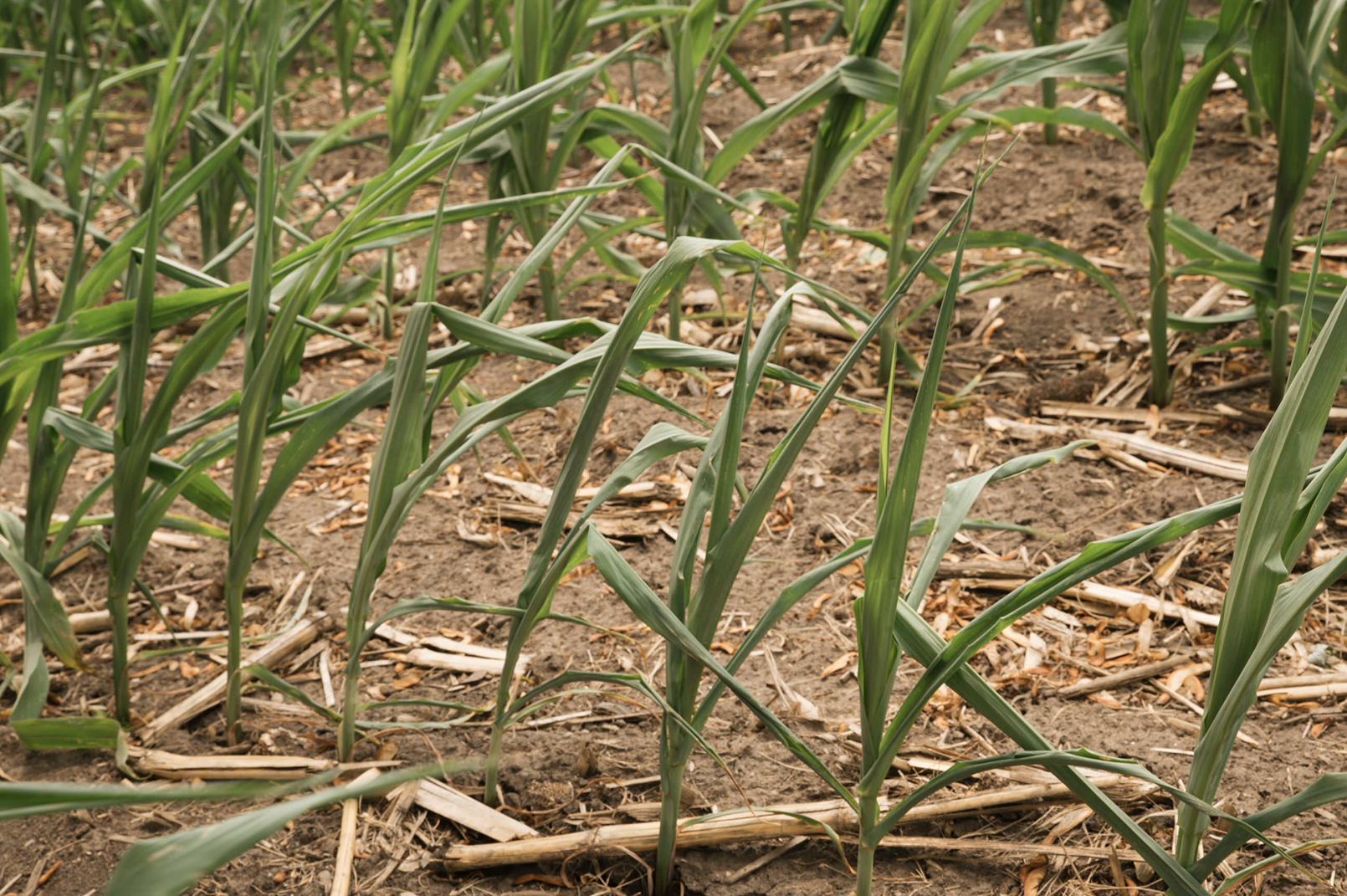
In dryland farming, the effects of drought can strike rapidly, leaving producers searching for ways to salvage a distressed crop.
AgSpire Technical Advisor Austin Knight recalls working with a producer facing this situation when a severe drought set in mid-season. A corn crop that stood knee-high and vibrant green quickly became withered and drooping with the lack of rainfall. It seemed as though the sky simply shut off, refusing to release another drop of water during this critical growth period.
“When drought strikes, our first step is often to try and recover the crop,” Austin explained. “In this case, we looked at applying humic acid to stimulate microbial activity in the soil and potentially unlock more plant-available water.”
When drought stress begins, there are often ways to work with what’s left of the crop to salvage yield. Timely intervention can make a big difference. As Austin notes, “An ounce of prevention is worth a pound of cure,” a principle that applies to every production system, not just corn.

When Recovery Isn’t an Option
But sometimes, recovery isn’t possible. In this case, the crop was beyond saving.
Austin and the producer explored the next best use for this field and found a path forward: chop the corn and, with the next rain, plant a cover crop that could be used for grazing.
Turning Setback into Benefit with Cover Crops
Planting a cover crop after the corn was chopped helped stabilize the field for the next year’s crop and covered the soil that was left bare.
“Establishing a cover crop helps the soil retain more moisture when rain does return and promotes deeper water infiltration,” Austin explained.
How AgSpire’s Flexible Incentive Programs Can Help
AgSpire offers free incentive programs built to help producers meet their operation’s needs – including situations like this. Not only is the producer able to mitigate nitrogen buildup from the failed crop, but he also gains access to technical assistance and premium payments for cattle grazed on the newly established cover crop.
Beyond the immediate recovery, the shift toward integrated crop-livestock management helps build long-term resiliency into the operation. The cover crop supports livestock forage needs – while also improving soil organic matter, enhancing microbial activity, and contributing to better water retention for future growing seasons.
This approach emphasizes practical, boots-on-the-ground solutions paired with a vision for resiliency. “It’s about finding that balance between short-term recovery and long-term soil health,” he noted. “Producers face enough unpredictability. Our goal is to equip them with options that help their land bounce back stronger.”
Support When It Matters Most
Drought may be unpredictable, but with the right support and strategy, it doesn’t have to be a dead end. AgSpire works alongside producers to evaluate the situation, make practical decisions, and identify solutions that support both their land, livestock, and livelihoods.
Interested in learning how AgSpire can support your operation during drought and beyond? Explore the programs we offer (click here) or talk with one of our technical advisors today (call / text 605.675.7255)